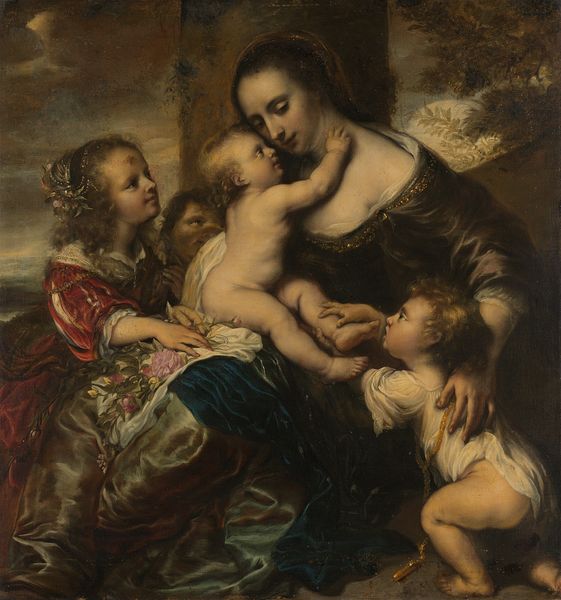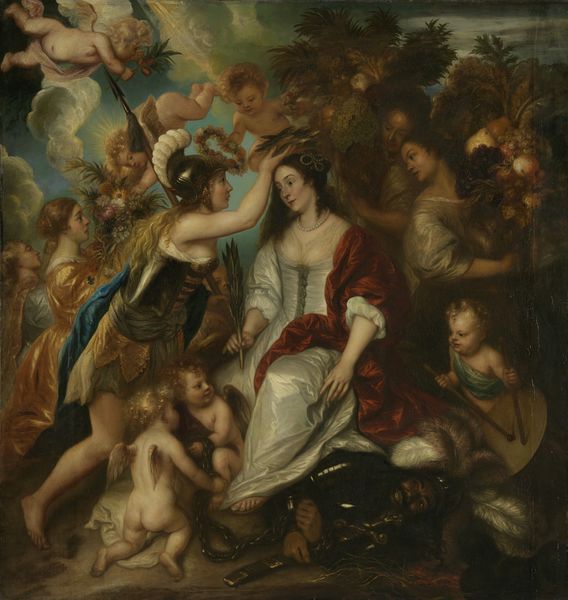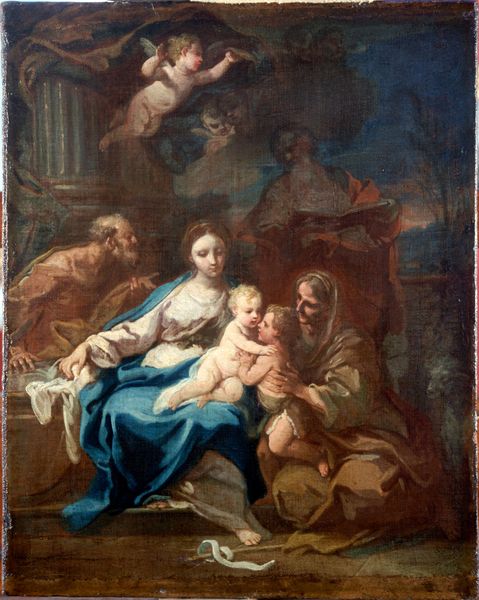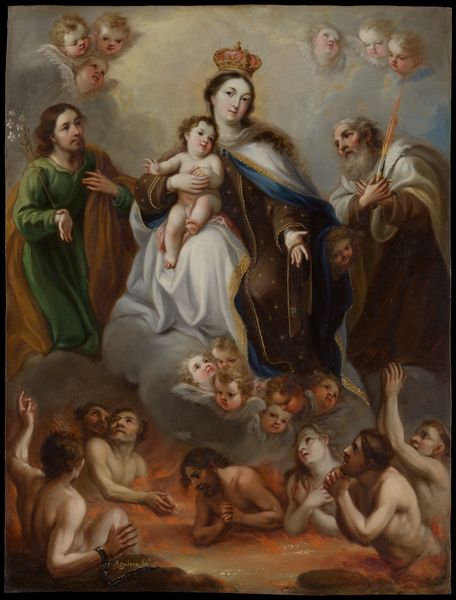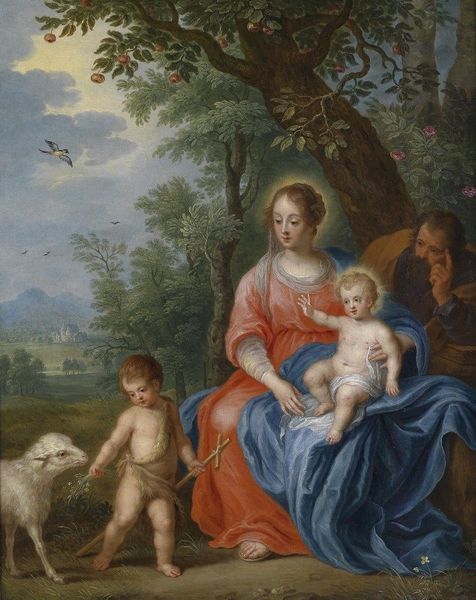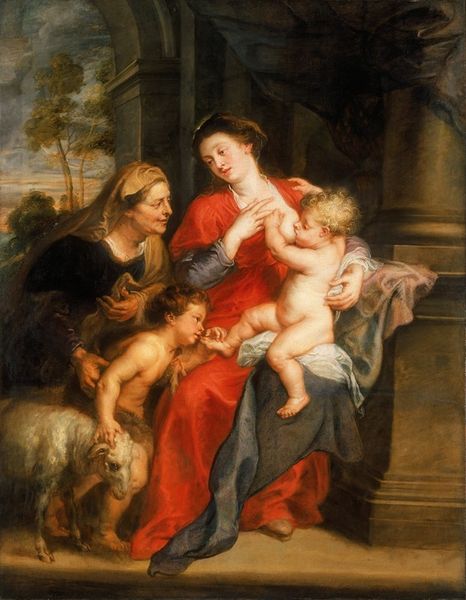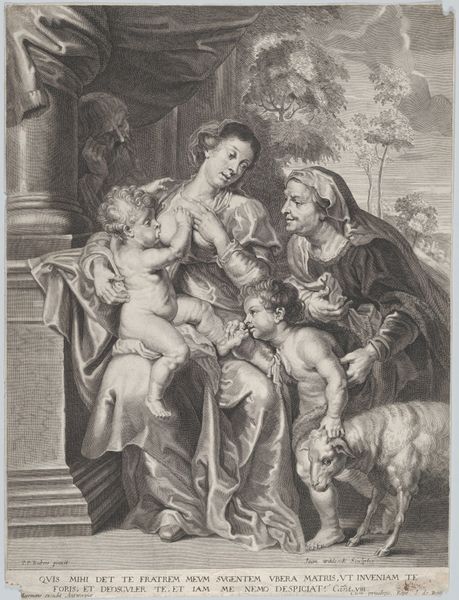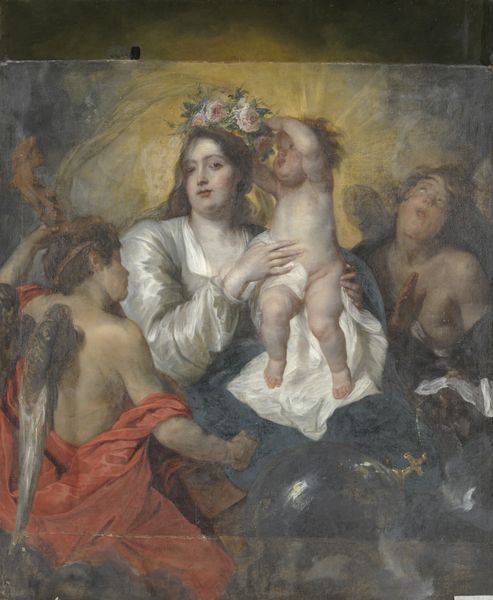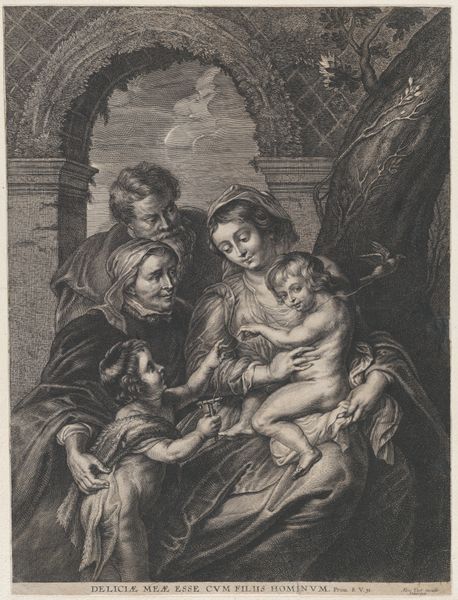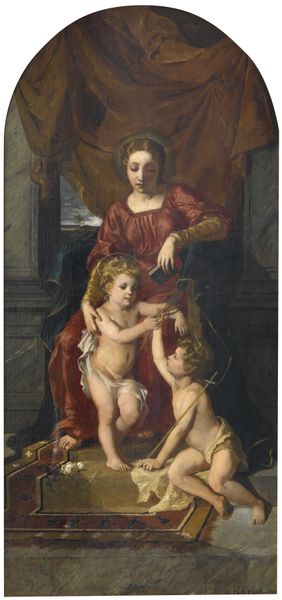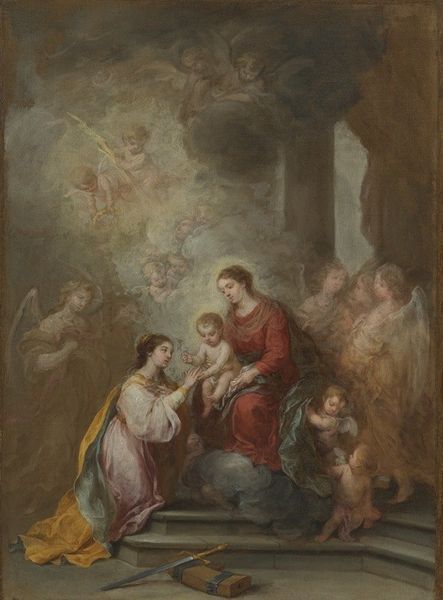
Portrait of Geertruyt, Margriet and Anna Delff, the Artist's Daughters (Portrait of three Little Girls in a Landscape) 1660
0:00
0:00
oil-paint
#
portrait
#
baroque
#
oil-paint
#
landscape
#
figuration
#
oil painting
#
genre-painting
#
history-painting
Dimensions: support height 202.5 cm, support width 187 cm, outer size depth 9 cm, total weight 45 kg
Copyright: Rijks Museum: Open Domain
Editor: This is "Portrait of Geertruyt, Margriet and Anna Delff, the Artist's Daughters," painted by Jacob Willemsz. Delff II around 1660, using oil paint. It strikes me as quite formal, the children posed deliberately within a seemingly pastoral setting. What do you make of it? Curator: Looking at this through a materialist lens, it's interesting to consider the context of the oil paint itself. Pigments at this time were often costly, derived from specific regions. Think about the lapis lazuli for the blues or even the source of the lead for the white – what does the very materiality of the work tell us about the Delff family’s social standing, their access to global trade networks? Editor: So, you're saying the materials themselves indicate wealth? Curator: Precisely. The meticulousness also. See how detailed the garments are? That implies significant time and skilled labor both on the part of the artist and potentially on that of textile artisans. Were the clothes new? Passed down? Mended? The condition of the fabrics matters when we're looking at materiality. Editor: I see. So the time and resources dedicated to creating this image and the objects depicted reflect their status? It's not just *what* is painted, but *how* and with *what*? Curator: Exactly. Consider also who would have commissioned this. It likely wasn’t a democratic process. It highlights the social hierarchies and access that dictated art production in 17th-century Dutch society. What assumptions about women did the culture carry at this time, and how do these objects challenge or conform to them? The bow and arrow for the daughter who poses with the falcon for instance. Is it about an appropriation of patriarchal symbol to showcase that wealth and the associated freedom afforded by that economic power. Editor: It reframes the whole portrait. It’s no longer just a picture of three girls; it's an object steeped in economic and social meaning. Thank you! Curator: A pleasure. It makes one think about art as more than just representation.
Comments
No comments
Be the first to comment and join the conversation on the ultimate creative platform.
